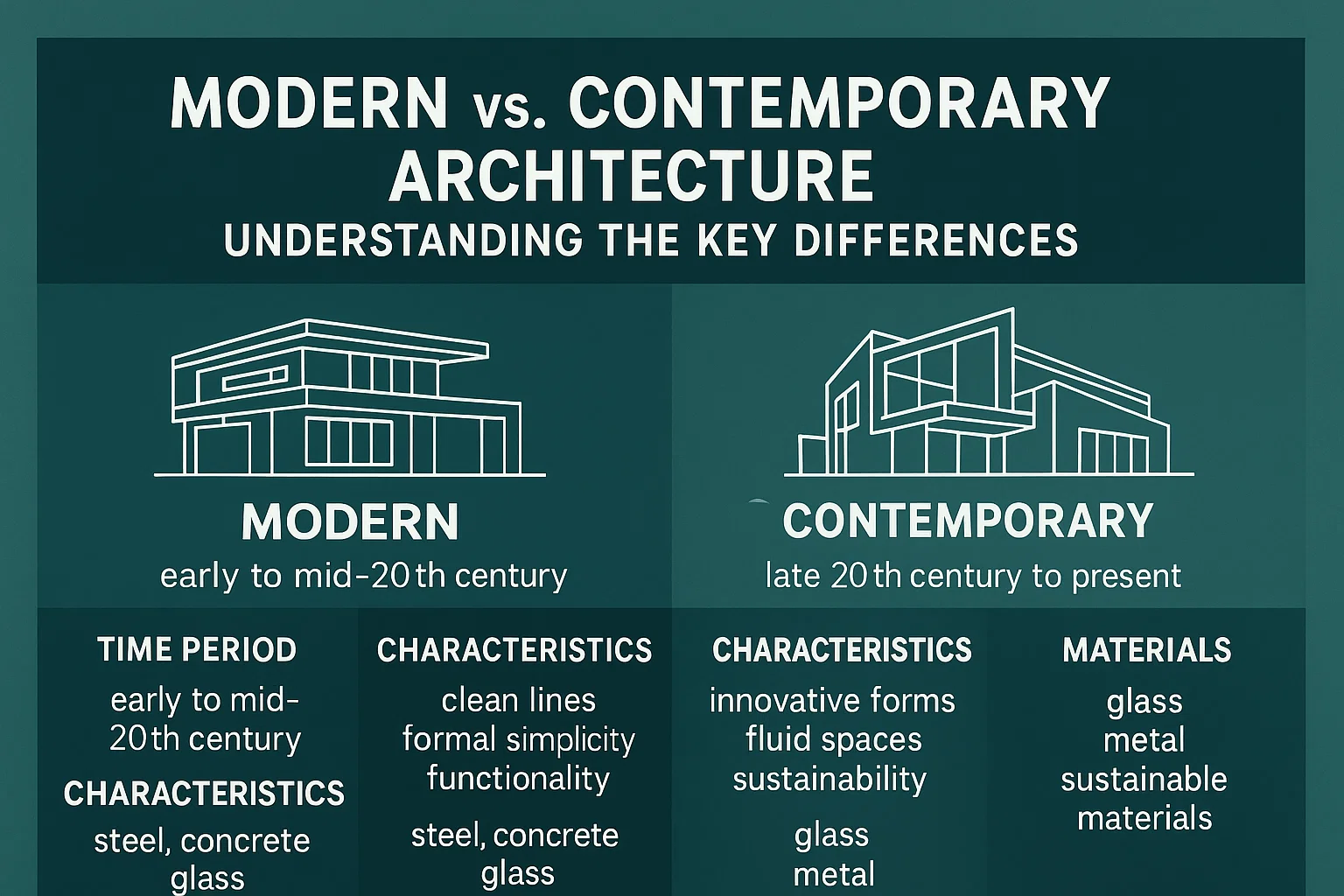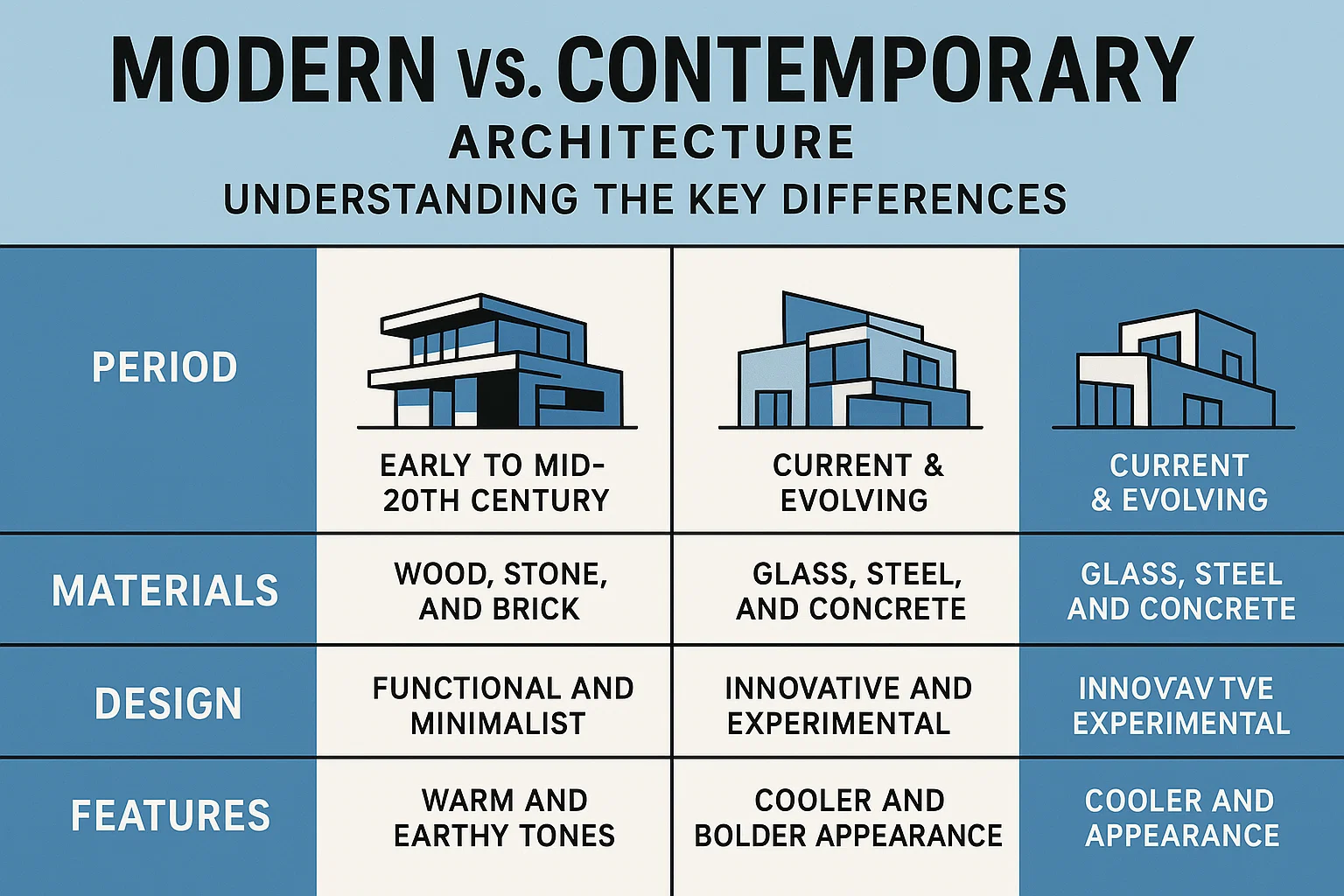Modern vs. Contemporary Architecture: Understanding the Key Differences

Modern vs. Contemporary Architecture: What Sets Them Apart?
The terms “modern” and “contemporary” are frequently conflated in discussions about architecture and interior design. Though these styles may share visual similarities, they represent distinct philosophies and eras. Below, we explore their defining features and how to tell them apart.
Modern Architecture: A Historical Perspective
Emerging in the early 20th century and flourishing until the mid-1900s, modern architecture was shaped by the modernist art movement and technological innovations of the Industrial Revolution. Pioneering materials like steel, reinforced concrete, and plate glass enabled architects to depart from traditional designs and embrace minimalism.
Key characteristics of modern architecture include:
- Rectangular, geometric forms with clean lines
- Minimal ornamentation or detailing
- Low, horizontal structures that blend with landscapes
- Asymmetrical elements
- Open floor plans and abundant natural light
- Neutral exteriors with warm natural materials like wood
- Integration with nature through large windows or outdoor spaces
Contemporary Architecture: Fluid and Evolving
Contemporary architecture is not tied to a specific era—it reflects current trends and innovations. This style borrows from past movements while incorporating cutting-edge technology, sustainability, and unconventional forms. Unlike modern architecture, its definition evolves with time.
Key characteristics of contemporary architecture include:
- Blend of angles, curves, and free-form shapes
- Mixture of materials (e.g., glass, metal, recycled elements)
- Open layouts with asymmetrical designs
- Focus on eco-friendly practices and energy efficiency
- Use of smart-home technology
- Bold, experimental proportions and layouts
Why the Distinction Matters
Understanding these differences helps clarify personal preferences when buying or designing a home. While professionals sometimes use “modern” and “contemporary” interchangeably, recognizing their unique traits ensures better communication about aesthetics, functionality, and sustainability goals.




